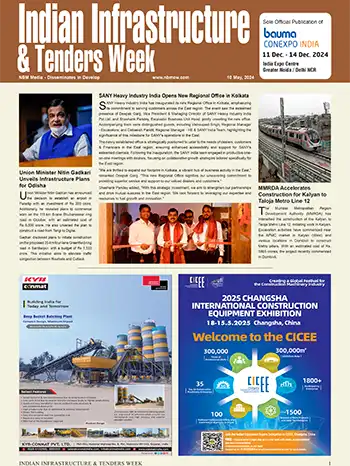Developing a Corrosion Resistant RCC Structure
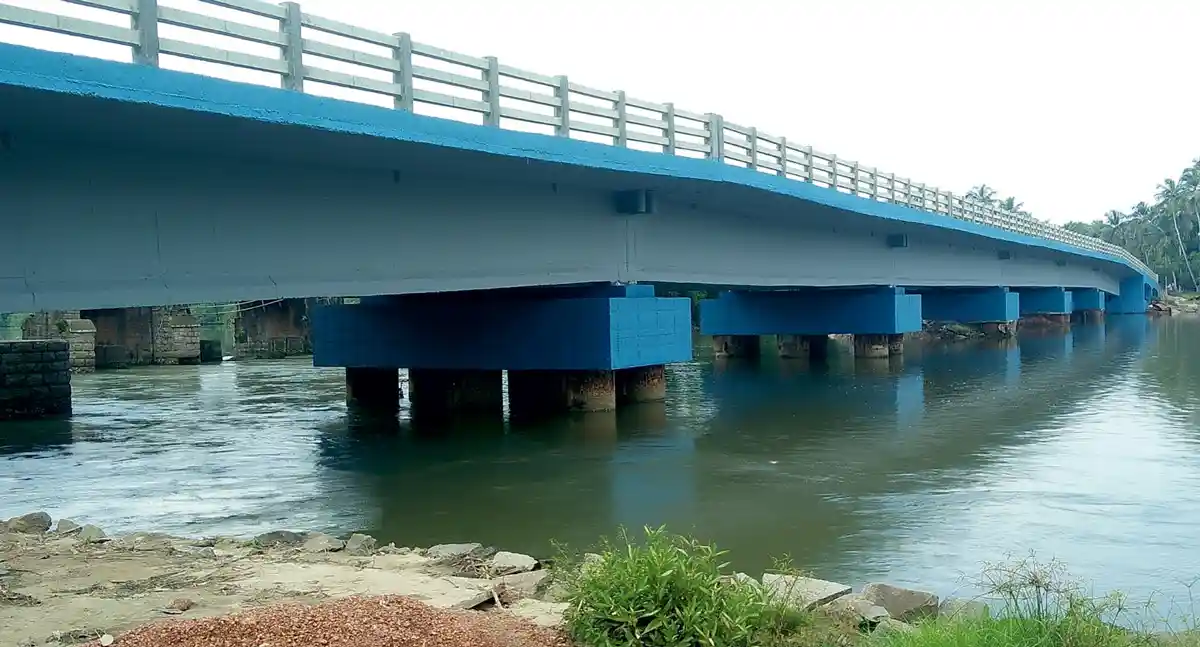

Along with the thickness (quantity) of cover, the porosity of concrete cover (quality), is of utmost importance. Lower the porosity, greater the durability of the structure. To reduce porosity, compaction must be done properly. Even the water cement ratio must be taken care of. This is because more the water cement ratio, more is the porosity, and more vulnerable will be the structure for attacks from environmental impacts. But, if we reduce the water cement ratio, workability gets affected. Therefore superplasticizers will be needed. In addition to this, proper curing is needed to reduce shrinkage and cracking. So, for durable RCC, attention must be given to the quality, quantity, and curing of cover.
One option in such cases is to use self-compacting concrete. Self-compacting concrete gets compacted under its own weight and minimizes porosity, thereby decreasing the chances of corrosion. These concretes flow around the reinforcement, without creating water lenses and have better compressive strength. This ensures that in the case of a high strength concrete cube, the aggregates themselves get crushed. Usually, when a concrete cube is crushed for testing, the aggregates get separated from the matrix. Adding SCMs like silica fume is used to ensure proper gradation and thereby reduce porosity to the minimum possible.
Admixtures
Integral waterproofing admixtures help close capillaries in the concrete by crystallization. Crystallization continues for a long period of time as water enter the concrete and has a secondary reaction to form crystals. So as time passes, the porosity decreases. Pore volume is minimized by the pore blocking effect of growth of crystals. The porosity in usual good quality lab concrete [Average M30 concrete] is 12-14% at 28 days, whereas a high-performance concrete is expected to have a porosity of 8-10%. This crystalline material can reduce the porosity to about 4 - 6%.
Other durability enhancing admixtures include corrosion inhibiting admixtures which should be used for concreting in underground conditions, which is done using tremie pipes.
Admixtures cannot make bad concrete good; they can make good concrete better. Hence, ensure that you have a good mix design and then use the admixture. An admixture handbook developed by the Indian Concrete Institute gives guidance on the usage of admixtures as per site requirements in different geographic locations and exposure conditions. For example, a structure in Goa will face different kinds of exposure conditions as compared to a structure in the north-eastern region of India. Locations can be segregated into No Risk, Carbonation, Chlorides from sea water and from sand/mixture, Freeze/Thaw, Chemical Attack, Abrasion, etc.
Corrosion Factors
Corrosion due to carbonation is usually due to the formation of carbonic acid, reducing the pH of the RCC structure. The corrosion products formed due to this action, occupies a volume about 5 times more than its original volume of the reinforcement, leading to tensile stresses in the concrete. If the corrosion is due to chlorides, then it leads to pitting corrosion, which reduces the diameter of the reinforcement and can lead to a formation of hinge at the location of maximum bending moment. This kind of corrosion is far more dangerous because the rate of deterioration is very steep.
Corrosion involves chemical reaction and electrical conduction, which occur in two stages: initiation stage and the propagation stage (Fig. 1).
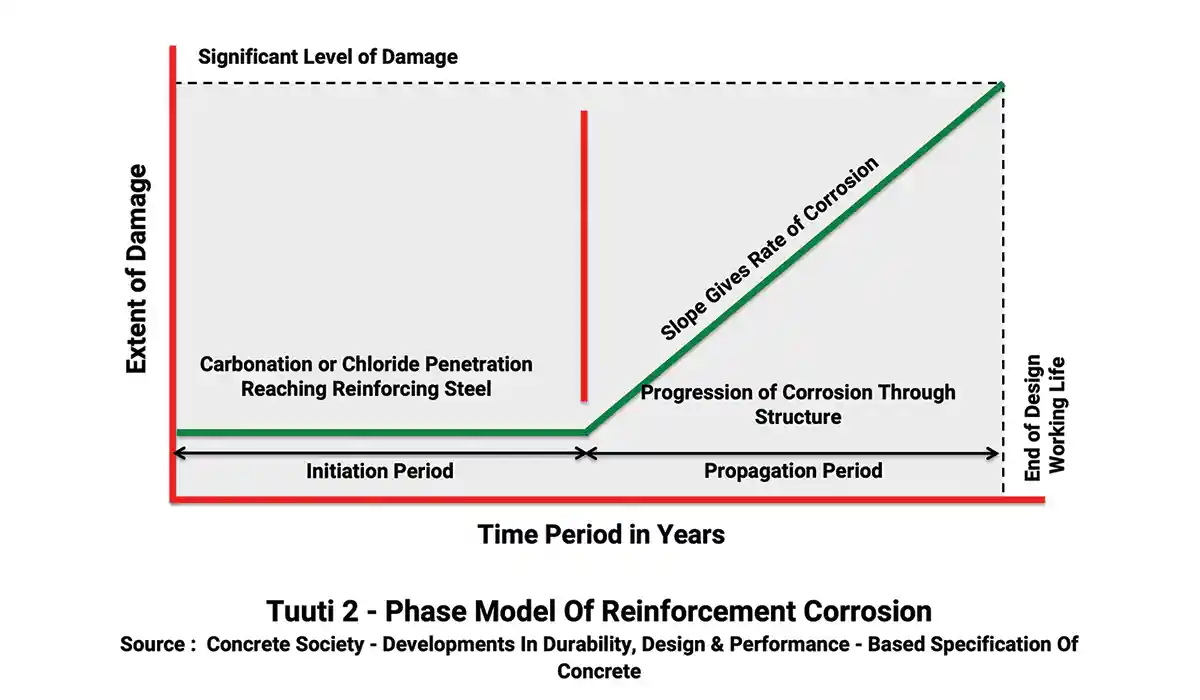 Figure 1: Rate of Corrosion
Figure 1: Rate of CorrosionAs described in Fig.1, the rate of corrosion is very steep in the propagation period and can lead to a significant level of damage in a very short time, and to avoid it we can use anti-carbonation coatings.
As De Sitter’s law of Fives states, “If maintenance measures are neglected, the repairs, when they become essential, can cost 5 times that of the maintenance costs”.
These days, ultra-high-performance concrete is promised by some companies saying that it can last for 1000 years. But the question is whether we need such a concrete, rather, we need to use economically viable options for the foreseeable 100 to 150 years or so.
Protecting Steel Reinforcement in Concrete
Steel quality in concrete can be protected by 5 kinds of protection:
- Passivation: If the concrete is such that it has a pH of 12.5, the reinforcement gets automatically protected.
- Alkaline slurry can be used as it enhances the alkaline environment around the bar and passivates it.
- Zinc-Rich coatings on rebars sacrifices itself to protect the reinforcement.
- Sacrificial Anode can be connected to the rebar to protect the reinforcement [electro-chemical / impressed current method of corrosion protection].
- Encapsulating the rebars with a barrier coating [epoxies or rust convertors] insulates it from electrical charge, thus saving it from corrosion.
Coatings
Protect your Concrete and the Steel will take care of itself! Coatings should be such that they should fill all the pores and be able to exhibit the following properties:
- Resistant to carbonation
- Allow for diffusion of water vapour – should be breathable
- Have crack bridging Characteristics
- Resistant to weathering due to UV rays
- Have waterproofing characteristics
Residual Life of Existing Structure
Merely three non-destructive tests are not sufficient for evaluating the strength of concrete or its residual life. In fact, all the necessary tests, including the semi destructive test, need to be done as they all have their own importance and help in determining the life expectancy of the structure. There is specialty testing for chloride content and for structures in zones around marine areas. For example, a bridge pier in a water body will have 3 cores: one under the water, another in the alternative dry and wet zone, and the third on the top area.
Service Life Modelling uses a platform using stipulated data collection and a probabilistic approach for determining the risks of corrosion. Fig. 2 shows the degradation curves given by modelling platform by assuming different scenarios.
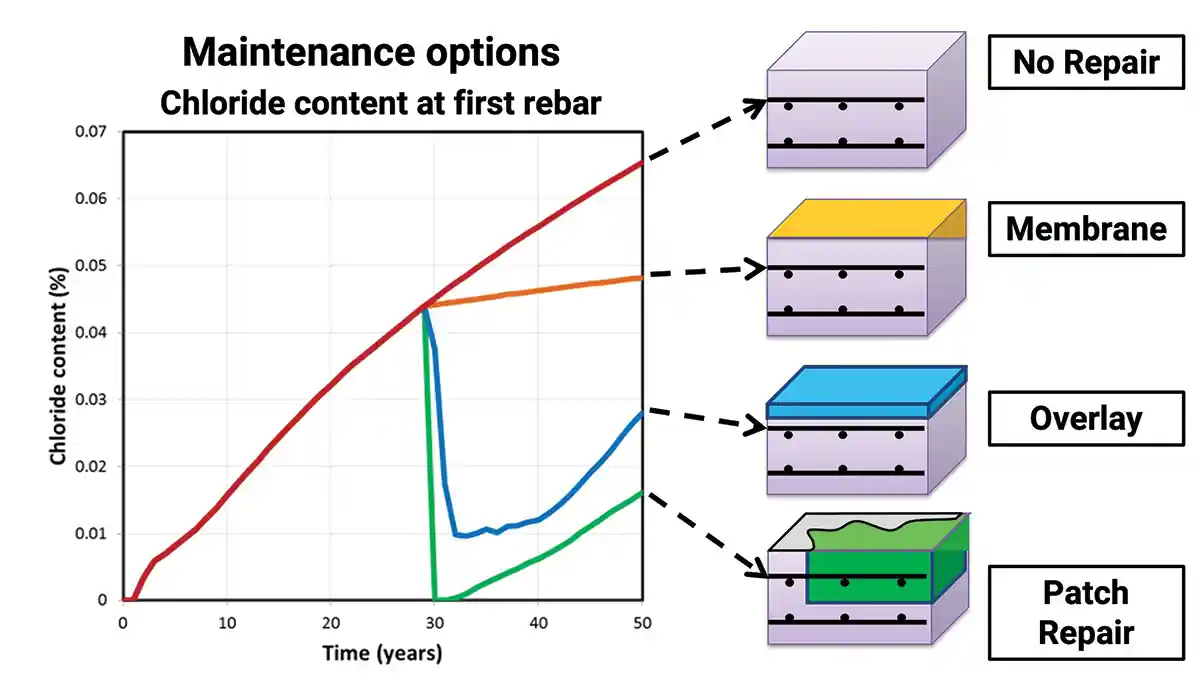 Figure 2
Figure 2The graph shows the impact of chlorides in concrete under different scenarios, viz.; if no repair is done, if membrane or overlay repairs are done or if patch work is done as per the simulation software.
About 25% owners are usually unhappy after 5 years or repairs and 75% are unhappy after 10 years of repairs, so, durability of repairs must be of utmost importance.
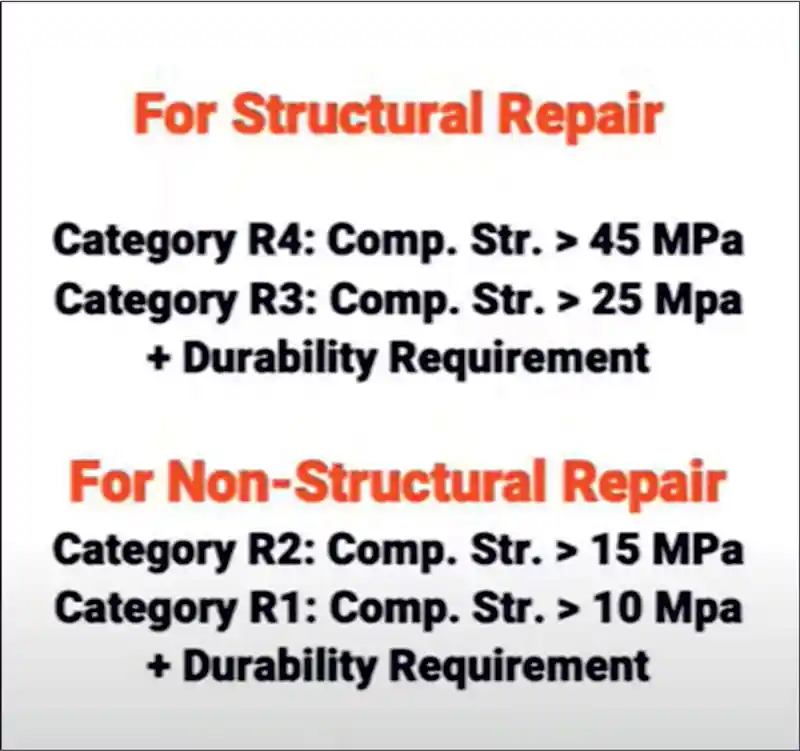 Figure 3: Mortar strength for structural repair - Source: EN 1504
Figure 3: Mortar strength for structural repair - Source: EN 1504Conclusion
Rehabilitation of RCC structures is a key aspect of maintaining them. In this case it is imperative that the owners and specifiers understand the extent of the damages and the correct solutions to be used in rehabilitating the structures. Once the process is understood, the correct systems and methodologies can be used. This article coveres various methods and materials available in the field today. A combination of various systems can address any rehabilitation scenario. International codes such as EN 1504 can be referred to as they provide excellent step-by-step guidelines to address various defects.
(The above information is sourced from the online technical discussion Design Life and Life Expectancy of RCC structures with respect to the deteriorating effect of environmental agents like chlorides and sulphates on the structure. The webinar was conducted by SQVe consultants).
Concrete Construction June - July 2022


















